Graduate Geothermal training in the European Economic Area
Proceedings of the 13th International Conference of the Croatian Nuclear Society
NEK 3 inch Cold Leg Break LOCA Calculation using TRACE 5.0p5 and RELAP5/MOD 3.3 Codes
Dose Rate Assessment Around The PCFV Release Line During Severe Accident Conditions in Nuclear Power Plant Krsko
Calculation of the QUENCH-02 Experiment with the ASYST Code Including the Uncertainty Evaluation
Uncertainty Study of the In-Vessel Phase of a Severe Accident in a Pressurized Water Reactor
Spent Fuel Dry Storage Loading Plan Based on Uniform Decay Heat Distribution among Casks
Methodology to calculate radiological impact for NPP Krško life time extension environmental impact assessment
Preliminary Uncertainty Assessment of a Severe Accident Scenario Using the ASYST Code
NPP Krško Large Break Loss of Coolant Accident using MELCOR Code
Room Classification Based on EMC Conditions in Nuclear Power Plants
Analysis of the upflow conversion modification and influence on selected LOCA accidents in a PWR plant
Comparison of Measured and Calculated Data for NPP Krško CILR Test
Reactor Vessel Modelling with the MELCOR Code
Contribution of FER to the WP4: summary report for the first year, TA2/SARNET ASCOM Technical report
NPP Krško 3 inch Cold Leg Break LOCA Calculation using RELAP5/MOD 3.3 and MELCOR 1.8.6 Codes
Fuel Handling Building Response to SFP Loss of Cooling
Influence of Detailed PCFV Model on Containment Behaviour During SBO
Effectiveness of SFP Spray Cooling during Loss of Coolant Accidents
Proceedings of the 12th International Conference of the Croatian Nuclear Society
NPP Krsko IB Modelling with GOTHIC and MELCOR Codes
Comparison Between ORIGEN2.2 and ORIGEN-S Calculated Source Term
Comparison of Measured and Calculated Data for NPP Krško CILR Test
Economic and environmental assessment for enhanced geothermal systems integration into energy systems Decision-making support tool for optimal usage of geothermal energy
Overview of techno-economic issues of enhanced geothermal systems implementation and integration
Operation and Performance Analysis of Steam Generators in Nuclear Power Plants
Application of ASTEC, MELCOR, and MAAP Computer Codes for Thermal Hydraulic Analysis of a PWR Containment Equipped with the PCFV and PAR Systems
Mathematical model of the NPP Krško PCFV system for the RELAP5 computer code
Calculation of NEK CILR Test Using GOTHIC Code
NPP Krško Station Blackout Analysis after Safety Upgrade Using MELCOR Code
Verification of GOTHIC Multivolume Containment Model during NPP Krško DBA LOCA
Independent Review of NPP Modifications and Safety Upgrades
NPP Krško DVI LOCA Calculation using RELAP5/mod 3.3 and FRAPTRAN to Assess UFC Modification Influence
Hot Leg Streaming Calculation for Two-Loop PWR Plant
NPP Krško Containment Modelling with the ASTEC Code
Calculation of Hydrogen Concentration in Containment during LOCA Accident
Optimization of OPDT Protection for Overcooling Accidents
Decay Heat Calculation for Spent Fuel Pool Application
NPP Krško Containment Modelling and Calculation with the ASTEC Code
Spatial Distribution of Hydrogen in NEK Containment
Radiation heat transfer in a pressurized water reactor lower head filled with molten corium
Coupled code calculation of rod withdrawal at power accident
ASTEC Computer Code Application to NPP Krško
Severe Accident Analysis in the NPP Krško with the ASTEC Code
Severe Accident Analysis in a Two-Loop PWR Nuclear Power Plant with the ASTEC Code
Coupled Code Calculation of Rod Withdrawal at Power Accident
Influence of Modelling Options in RELAP5/SCDAPSIM and MAAP4 Computer Codes on Core Melt Progression and Reactor Pressure Vessel Integrity
Calculational Model for In-Vessel Phase of Severe Accidents in Nuclear Power Plant
Comparison of R5G Coupled Code and Classical “Two-steps” Containment Calculation
Corium Behaviour and the Lower Head Thermal Response after a Core Meltdown
RELAP5 Modeling of PWR Reactor RTD Bypass
Analysis of In-Vessel Severe Accident Phenomena in NPP Krško
QUENCH-11 Experiment Analysis with RELAP5/SCDAPSIM Code
Influence of Modelling Options in RELAP5/SCDAPSIM and MAAP4 Computer Codes on Core Melt Progression and Reactor Pressure Vessel Integrity
Analysis of Small Break LOCA During Mode 3 and Mode 4 Operation for NPP Krško
Benchmark Exercise on QUENCH-11 Experiment
Core Degradation and Hydrogen Production During a Severe Accident
Evaluation of Accident Sequences in IRIS Relevant for Revising the Need for Relocation and Evacuation Measures Unique to NPPs for Innovative SMRs
RCP Seal Leakage Analysis During Station Blackout for NPP Krško
Analysis of SBO Accident in NPP Krško using RELAP5/SCDAPSIM/MOD3.2
Evaluation of the Safety Margins during Shutdown for NPP Krško
Analysis of Phebus FPT1 Experiment with RELAP5/SCDAPSIM Computer Code
RELAP5/SCDAPSIM Analysis of the QUENCH-06 Experiment
QUENCH-06 RELAP5/SCDAPSIM Nodalization Notebook
ISP-46 Analysis with RELAP/SCDAPSIM Computer Code
Analysis of International Standard Problem ISP-45 on QUENCH Facility Using RELAP5/SCDAPSIM/MOD3.2 Computer Code
Applicability Of Relap5/Scdapsim Code For Thermal-Hydraulic Analysis of Pakistan Research Reactor 1
Teaching
University undergraduate
- Electric Power Engineering (Lecturer in charge)
- Electric Power Engineering (Lecturer in charge)
- Environmental Sustainability and Climate Change Mitigation (Lecturer in charge, Lecturer in charge)
- Environmental Sustainability and Climate Change Mitigation (Lecturer in charge, Lecturer in charge)
- BSc Thesis (Lectures)
- BSc Thesis (Lectures)
- Project (Lectures)
- Project E (Lectures)
University graduate
- Computational Fluid Dynamics (Lecturer in charge)
- Computational Heat Transfer (Lecturer in charge)
- Fluid Dynamics and Heat Transfer (Lecturer in charge)
- Nuclear Engineering (Lecturer in charge)
- Nuclear Safety (Lecturer in charge)
- Renewable Energy and Energy Storage (Lecturer in charge)
- Renewable Energy and Energy Storage (Lecturer in charge)
- Risk Assessment (Lecturer in charge)
- Risk Assessment (Lecturer in charge)
- Graduation Thesis (Lectures)
- Laboratory of Electrical Power Engineering 2 (Lecturers)
- Project (Lectures)
- Project (Lectures)
- Seminar 1 (Lectures)
Postgraduate doctoral study programme
- Availability Evaluation of Electric Power System Subsystems (Lecturer in charge)
- Probabilistic Assessment of Technological Risk (Lecturer in charge)
Competences
-
Engineering – general
Thermal engineering -
Reliability
Availability Reliability theory -
Science – general
Thermodynamics -
Control systems
Heating systems Thermal analysis -
Industry applications
Industrial accidents Heat engines Steam engines Renewable energy sources Sustainable development Radiation safety -
Materials, elements, and compounds
Fluid dynamics Radioactive materials Nuclear fuels Radioactive decay -
Power engineering and energy
Energy consumption Energy conversion Photovoltaic cells Energy resources Nuclear fuels Solar energy Geothermal power generation Nuclear power generation Solar power generation Power system reliability


 Pristupačnost
Pristupačnost